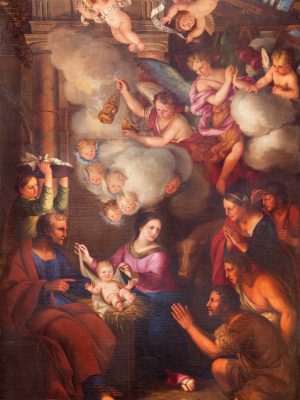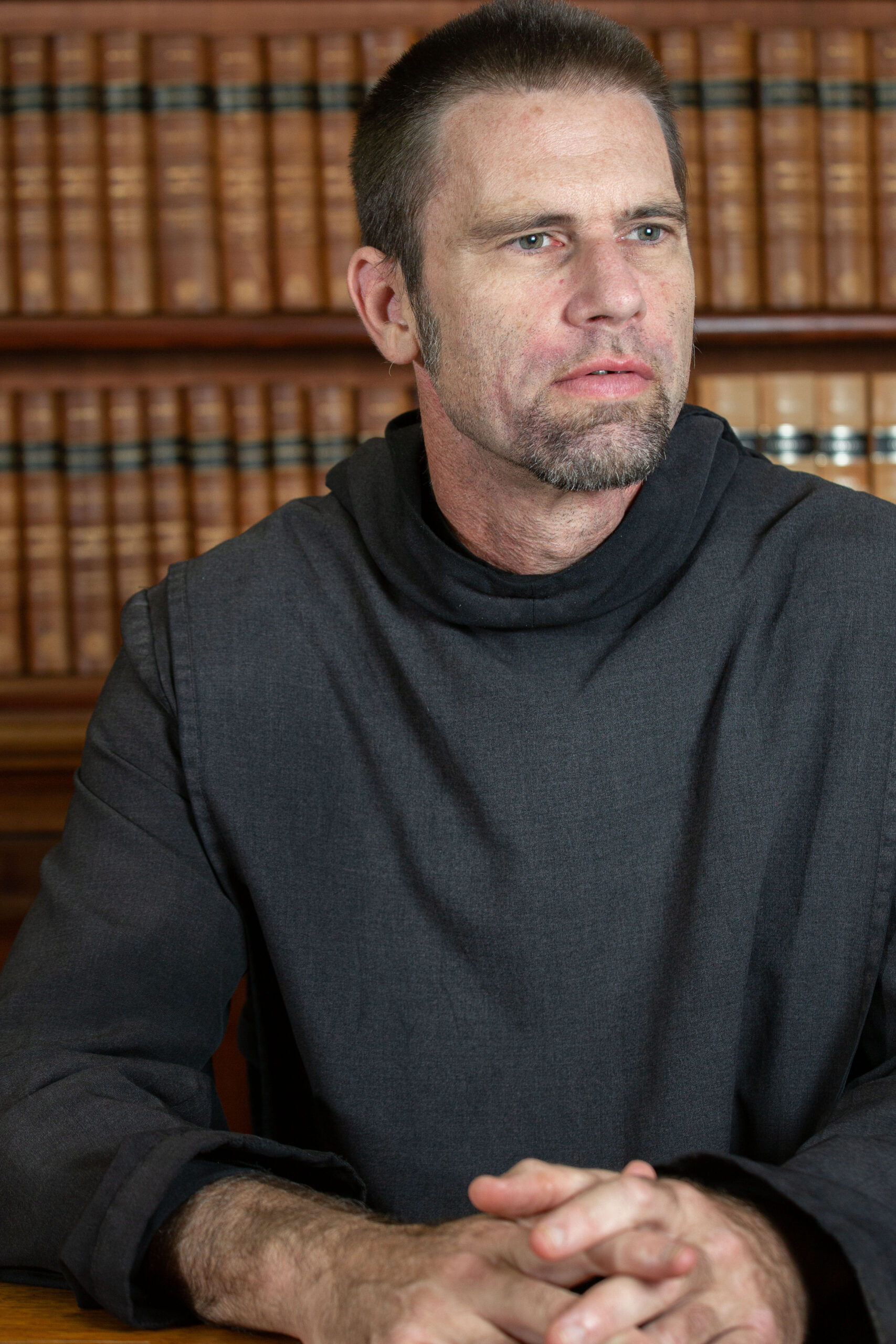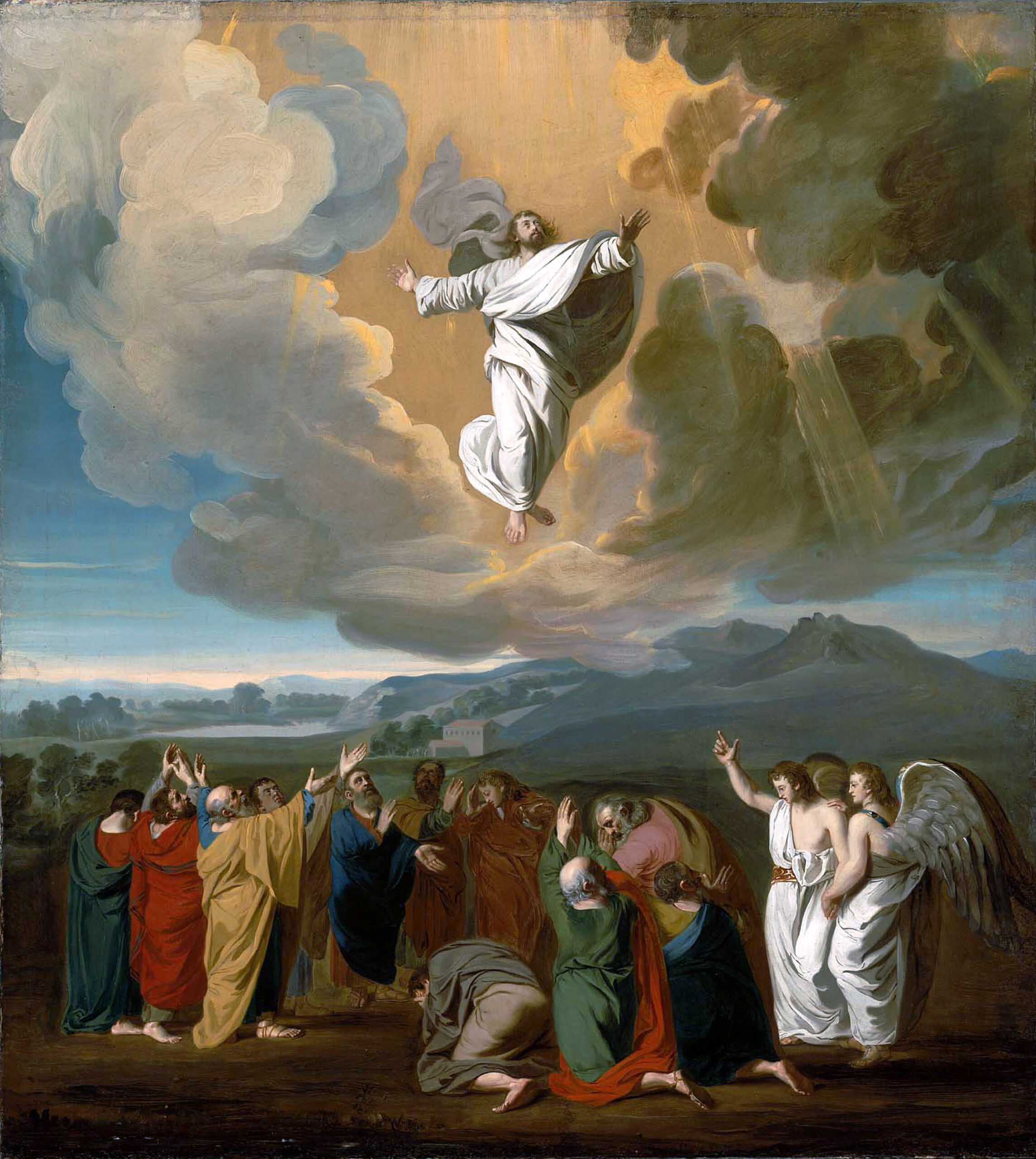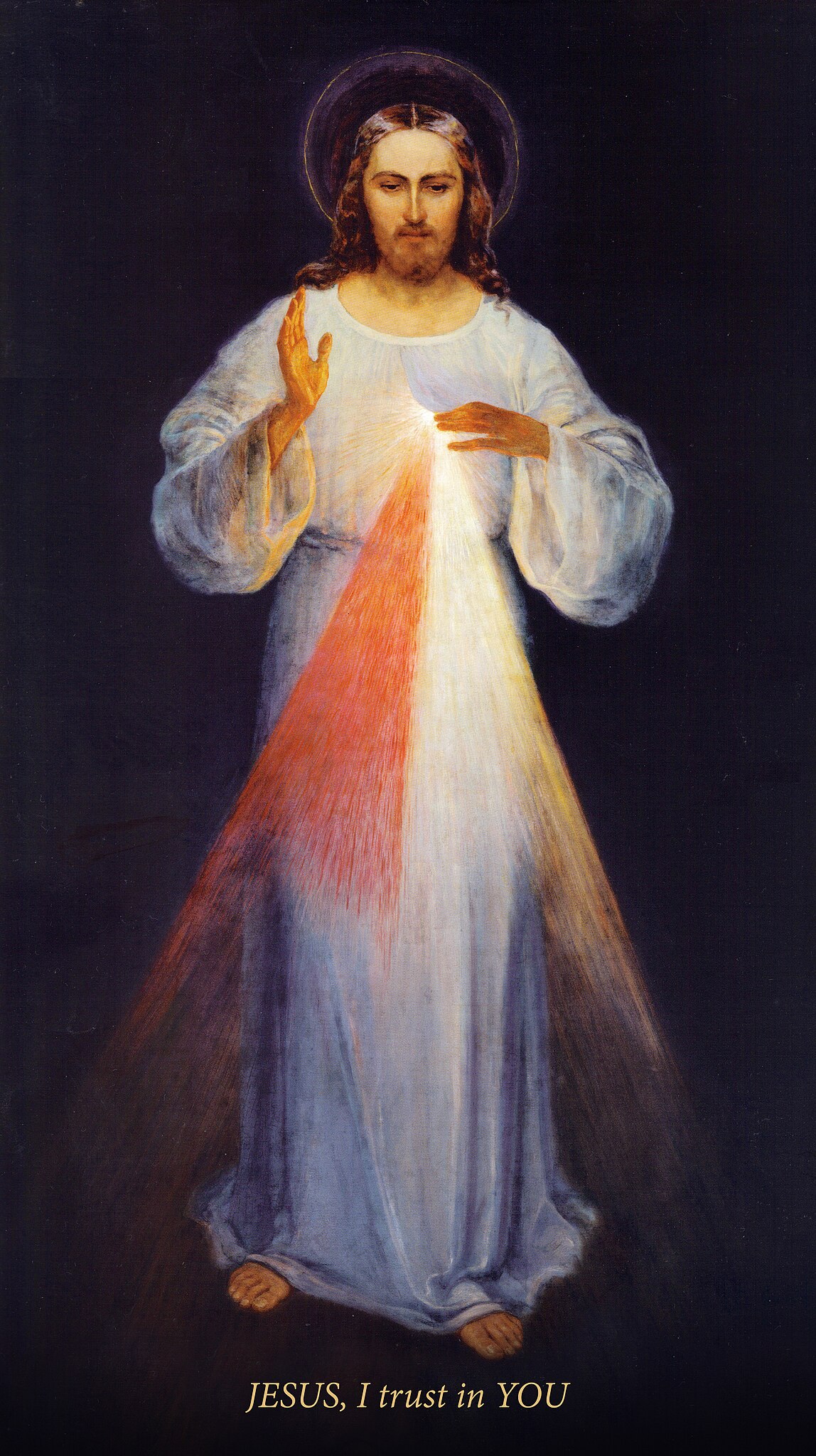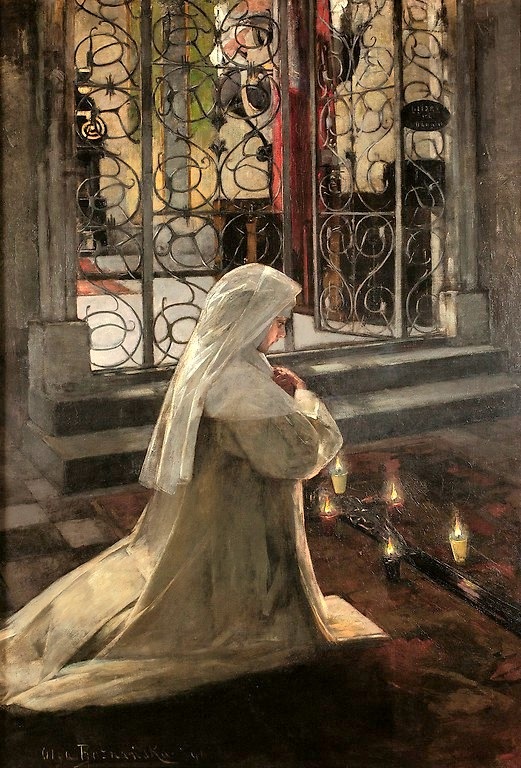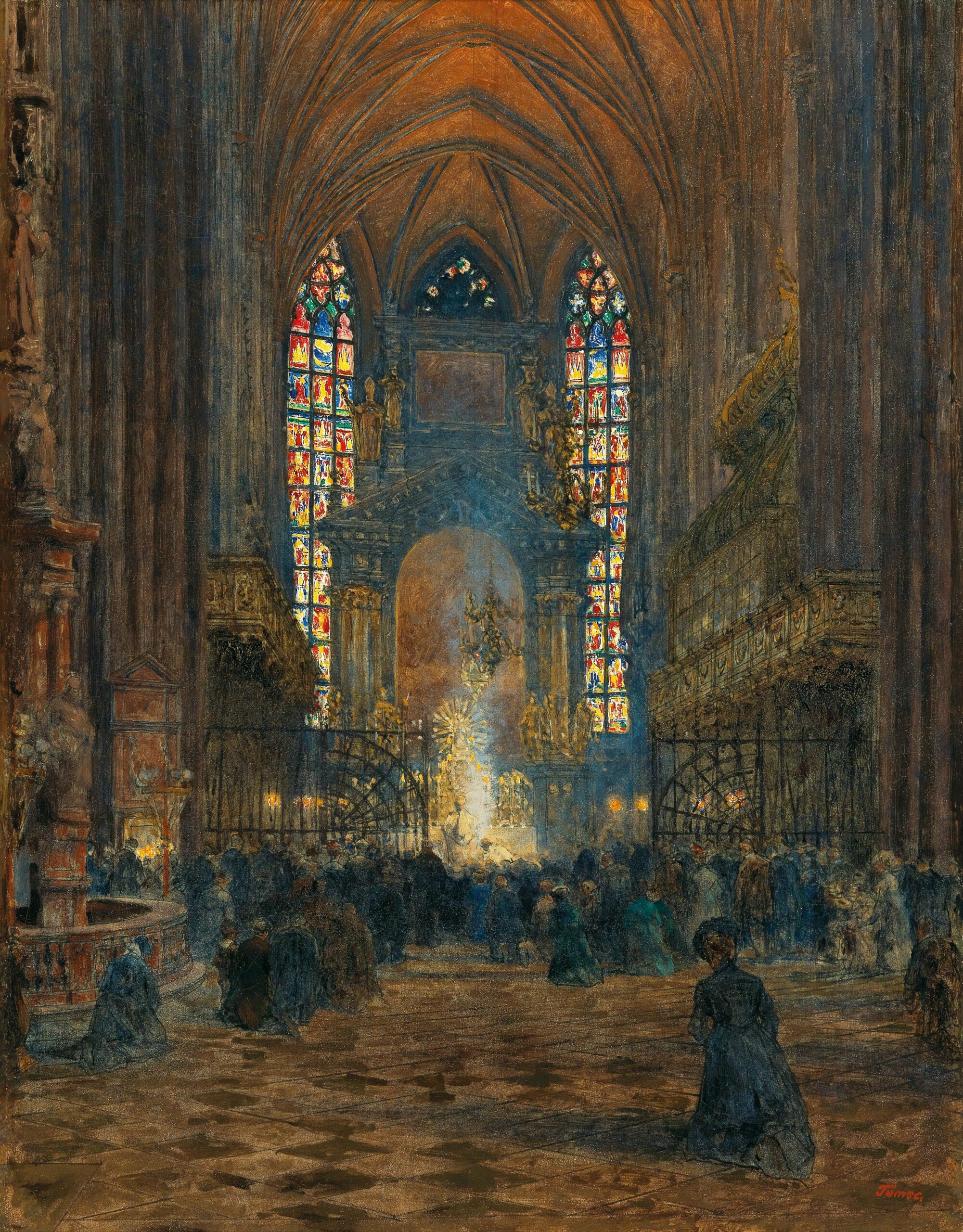The season of Advent, like the season of Lent, is a time of earnest and directed preparation for God. Whereas in Lent, we prepare for the blessed passion and glorious Resurrection of our Lord, in Advent we prepare for His Incarnation, the entrance of Jesus Christ, who is God Himself, into this world of time and space. In this most awesome of mysteries, the Divinity did not simply ‘disguise’ Himself as a mortal, but rather actually became human.
It is illuminating to note that, according to ancient Church tradition, whenever this mystery of the Incarnation is mentioned, the head is bowed in reverence. Arguably this Incarnation was the greatest miracle of all, for through it the God who is utterly infinite and transcendent was authentically and inseparably united to our humble and finite human condition. By sharing in this human condition, He not only redeemed it from the grasp of sin, death and Satan, but elevated it to share in His own ineffable glory. According to St. Athanasius, “Christ became human so that we might become Divine.”
Like Lent, the preparation which we are called to undertake during Advent should be a serious and earnest endeavor. Although the emphasis in Lent is more penitential, Advent is also a time for careful and honest examination of one’s conscience, life and thoughts, and for striving for real growth in faith, hope and charity. We may perhaps consider these weeks leading up to Christmas as an opportunity to prepare the stable of our hearts to receive the infant Jesus.
What are some particular aspirations to pursue during this time? To answer this question, we may pertinently ask, “What conditions should be present in a home which is preparing itself for the coming of a new baby?” There are three things which immediately spring to mind: cleanliness, peace and generous supplies of nourishment and support. Each Catholic may usefully consider their own life in relation to these three traits during this season of preparation for Christmas.
Firstly, we may ask ourselves, “Is my life and my heart sufficiently clean and tidy to receive worthily the Holy Child?” Of course, this is never really possible for any human being—with the singular exception of the immaculate and most Blessed Virgin Mary. Except for Christ and His glorious Mother, no human soul is ever completely free from the stain of sin during this mortal life.
Yet, even accepting this inescapable reality, it is good to ask ourselves if, when we look at our lives and our hearts honestly, do we see a little too much ‘junk’ lying around? Is there any dirt or filth hiding away in the corners? Are there any things present which we would find embarrassing, or—what is worse—that we are ashamed of? Have we let layers of dust accumulate over what is of most value, our faith, our piety and our love? Advent is an ideal time to do some gentle but serious cleaning.
But cleanliness in itself is not sufficient to create an environment suitable for a small infant. Peace is also essential. When we look into our hearts, what do we find there? A quiet ‘inner chamber’ of prayer? A refuge of interior tranquility? A peaceful pasture where the blossoms of love of God and neighbor spring in all their radiant beauty?
Or do we perhaps find a battlefield of raging passions and conflicting impulses, or a boiling volcano of concealed and unwholesome desires? Perhaps we see the roaring lion of anger and wrath, or the strutting peacock of pride, or the serpent of lust, or the swine of gluttony. Perhaps the gunshots and canon fire of malicious and unkind thoughts are flying around in our hearts, even if we never let them show in our actual words or behavior.
Let each of us consider if our heart is really a place where the baby Jesus could take His rest, safely and peacefully. For most people most of the time, it is probably fair to say that the answer is ‘no.’ Yet, here we must look beyond ourselves and beyond that which surrounds us, and turn our gaze upwards—to the infinite blessedness and glory of God, to the unimaginable delights and peace of Heaven, to the boundless love and mercy of Jesus, to the purity and splendor of Mary.
It is in such things alone that true peace is to be found, and that whatever turmoil and wars rage within ourselves may be calmed. And by such contemplation we may obtain the peace which makes our hearts ready to welcome our infant Savior.
It is pertinent to note, however, that both cleanliness and peace, while certainly admirable and necessary pre-conditions for receiving a new-born child, are not in themselves enough. A well-organized and clinically hygienic hospital may be perfectly clean and may be governed with the most orderly calmness. Yet such an environment is not ideal for raising an infant, at least in the longer term. For though all that is harmful or detrimental may be absent, the positive elements of affection, emotional energy, personality and love are not there.
Similarly, our spiritual preparations involve not only an effort to eliminate the dust and dirt of sin and vice, and to calm the agitation of passion and conflict. Rather, and perhaps most importantly, we need to create an environment which is genuinely loving and welcoming, which is warm and colorful and pleasing. It is here that Catholics must work constantly to ensure that their faith and prayer life is well-resourced and well-nourished.
To employ as an analogy something which is perhaps somewhat commonplace, a person who has a particular enthusiasm, hobby or interest will normally acquire resources and material which support and stimulate their interest. A musician will have one instrument (or perhaps more than one), as well as sheet music, recordings, instructional books, biographies of other musicians, and so forth. An athlete will have all the equipment they need for their sport, as well as various training devices, literatures, videos, nutritional supplements and many other things.
Should we take our Faith, which many Catholics would name as the most important and foundational element of their life, less seriously than many people take their hobbies? Do we nourish ourselves with literature, images and ideas which support and stimulate our faith? Indeed, our Catholic tradition is so rich that it offers us virtually inexhaustible treasures, in the form of prayers, devotional practices, theological meditations, lives of saints, and so much more. Catholicism has never been a ‘puritanical’ religion, but embraces this richness of imagery and material to draw us closer to God and to inflame our heart with love and devotion.
It behooves us to work to make our hearts (and minds) warm and welcoming places for Christ when He comes as an infant this Christmas, the kind of place where Jesus will feel genuinely loved and genuinely ‘at home.’ There is, of course, no more effective way of doing this than through the presence of His own loving Mother, the Virgin Mary. For the infant Jesus, like any human baby, fervently desires to be where His Mother is.
By cultivating our devotion to the Queen of Angels, we not only drive away sin and temptation and move closer to the blessed peace of Heaven, but we draw Jesus to ourselves as well. It is, after all, the Mother who knows best about how to prepare a dwelling place for her own divine Son. For this reason, Mary should be our closest companion during the season of Advent. To prepare our heart to receive the infant Jesus at Christmas, we need to ensure that she is there, and suitably loved, honored and revered.
Let us work towards making ourselves stables ready to welcome Christ; let us work to cleanse ourselves of sin and vice; let us strive to calm whatever storms and battles may rage within our souls. But above all, let us kindle the fire of love and devotion, to make a warm, nourishing and home-like environment for Him. And as we do this, Mary, the handmaid of the Lord, will surely be gladly present to assist and guide us with her motherly love and wisdom.
Used with permission from the author.


